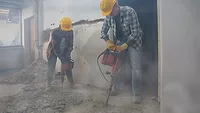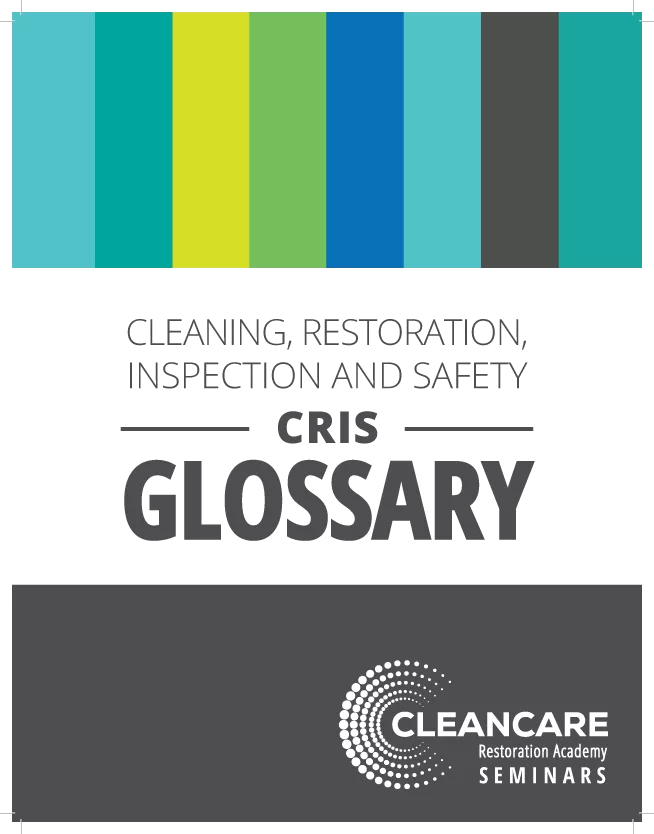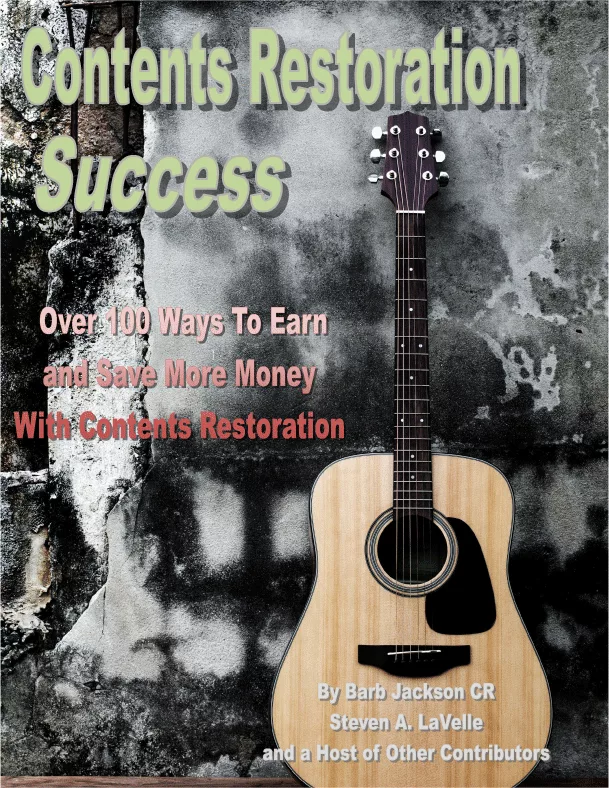The RRP Rule: A Significant Impact on the Restoration Industry

As a contractor, you should prepare for a new EPA regulation that becomes effective April 22. The Renovation, Repair and Painting (RRP) Rule addresses work performed in housing and child-occupied facilities built before 1978. If you disturb a surface area containing lead-based paint in a pre-1978 building, the EPA requires you become RRP certified and use specific work practices that prevent lead contamination.
Common construction, renovation and maintenance activities, such as grinding, sanding, drilling and cutting, can create hazardous levels of dust. Even small amounts can harm you, your employees and your customers.
Lead Poisoning
The federal government banned lead-based paint from housing in 1978. Up to that point, the more lead there was in a can of paint, the higher its quality and price. Lead makes paint easier to apply and quicker to dry while inhibiting rust, mold and mildew.Today, we know lead is an extremely toxic metal that causes many health problems. Like asbestos, there is no safe level of lead exposure. Lead can enter the body through breathing or swallowing lead dust. It accumulates, eventually storing itself in organs, tissue and bones where it can cause irreversible damage.
Lead levels in blood thought to be safe 20 years ago are now considered dangerous. With such small amounts confirmed to cause health problems in millions of adults and children, the regulatory focus is now on routine renovation and maintenance activities that disturb surfaces covered in lead-based paint.
Certified Renovator Course
An individual can become RRP certified by successfully completing a one-day EPA-accredited course. The course teaches how to comply with the RRP Rule by making practical changes in the way work is done.When working on a pre-1978 home or child-occupied facility, it is required that at least one RRP-certified renovator be on the job. Willfully violating the RRP Rule by employing prohibited work practices can result in fines up to $37,500.
It is a good idea to prepare for the RRP Rule and the possibility of enforcement by signing up for a certified renovator course. It will educate you and your staff how to work safely with lead by adopting simple practices and procedures.
Test the Paint
The RRP rule requires the contractor test each painted surface that will be disturbed during the job to determine if the paint contains lead. If the contractor resides outside of California, he will have to test the paint by using an EPA-approved test kit.A California-based contractor must assume that any structure built before 1978 contains lead, so testing as specified by the EPA is not necessary. Contractors outside of California may also elect to skip the testing process and assume that surfaces contain lead-based paint.
This decision is understandable, since 66 percent of all homes and apartments built between 1940 and 1960 contain this dangerous material; 25 percent of homes and apartments built from 1960 to 1978 contain lead-based paint as well.
Advise Your Customers
Before beginning a job in a home, child-care facility or school built before 1978, certain EPA materials must be made available to the homeowner or building manager. The contractor is also responsible for explaining the steps that will be taken to protect the residents or building occupants from any exposure to lead dust.
Setting Up a Lead-Safe Work Site
Any contractor performing remediation work is familiar with the requirements for creating a lead-safe work area:- The work area must be contained or separated from other parts of the building using heavy plastic sheeting.
- Objects that cannot be moved must be covered and sealed with poly as well.
- Entry doors and HVAC vents must be closed and sealed, and there are the warning signs to post, etc.
- Workers must have the appropriate personal protective equipment, i.e. clothing and respiratory protection.
Doing the Job
Common work practices in construction, renovation, restoration and demolition work create serious dust problems. Electric power tools such as drills, sanders, grinders, circular saws, reciprocating saws and scrapers all raise dust particles above OSHA’s Permissible Exposure Limit or “PEL” levels.These power tools are prohibited for jobs covered by the RRP Rule.
To contain dust safely under RRP, you must use “ventilated” power tools connected to a HEPA vacuum. These specialized power tools are designed for dust control. They have shrouds that capture the dust when it’s at its most friable and transfers it under negative pressure to a HEPA vacuum.
New dust catching devices for drilling are beginning to appear on the market. There are plastic bubbles that stick on the surface and allow it to be drilled through it as it captures the dust.
A simple method for accomplishing the same result is to spray shaving cream on the wall and drill through it. The shaving cream will capture most of the dust and it’s easy to wipe away and dispose.
Electric power tools certainly create the most friable and dangerous dust. However, there are lead-safe practices that apply to non-electric or manual tools, which can also generate huge amounts of dust. For example, in demolition work, prying and pulling materials or components apart is a dustless alternative to pounding and hammering.
Other traditional work practices prohibited by the RRP Rule include planing, needle gunning, or blasting power tools, unless they are connected to a HEPA vacuum. Open flame burning, torching and heat gunning are also prohibited since it creates dangerous fumes and small lead particles that settle on surfaces and are difficult to pick up.
Clean-Up
With the exception of floors, the protocol for clean-up following a remediation job is identical for lead dust. The first step is to collect all the dust and debris in heavy mil plastic and seal it tight. Once the poly is removed, any objects and all non-floor surfaces should be cleaned with a HEPA vacuum or damp disposable wiping cloths.Remember, lead is very toxic and it only takes a very small amount to poison you. Lead dust particles can remain on clothes, shoes hands and hair. HEPA vacuums should be used to clean work clothes and shoes before leaving the work area.
Do not bring lead-based paint dust home and expose your family to this poisonous material.
The last step is to clean the floor. Lead is a very dense, heavy metal so it tends to fall on the floor, and it is difficult to pick up. A floor that looks spotless may still contain lead dust, and normal cleaning methods are simply not sufficient to get the job done.
Sweeping is not effective and a standard vacuum may actually cause a more widespread exposure. Uncarpeted floors should be wet-mopped using a dual bucket system.
For cleaning carpeted floors, the RRP Rule is very specific. The only acceptable method is to use a HEPA vacuum connected to a powered brush roll.
Floor cleaning is critical because children play on floors where they can get the dangerous dust on their hands, toys and other objects they put in their mouths. Childhood lead poisoning is considered a major environmental health problem in the U.S. Children with unsafe levels of lead have damaged neural pathways in the brain causing learning and behavior disorders.
It is not by coincidence that approximately half of the children in special education today have higher-than-normal blood lead levels.

Cleaning Verification
After cleaning and a visual inspection, a certified renovator must perform a cleaning verification. The cleaning verification starts with a wipe down, using disposable cleaning cloths for every window and countertop.Uncarpeted floors are wiped clean using a Swiffer mop. Each “used” wipe or Swiffer cleaning cloth must be compared visually to sample images printed on an EPA Post-Renovation Cleaning Verification Card.
A certified renovator can use the EPA Post-Renovation Cleaning Verification Card to determine whether dust, debris, or residues still exist after cleaning, and if a re-cleaning is required.
Waste Disposal
Waste disposal for materials containing lead is similar to remediation of materials containing mold. All waste and debris should be disposed in accordance with federal, state and local regulations.Waste and debris should be placed in heavy mil plastic bags. Use a gooseneck seal and HEPA-vacuum the outside of the bag before it is removed from the work area. Examples of RRP waste include plastic sheeting; paint chips; drywall; wipes; mop heads; protective clothing; used respirators; gloves and architectural materials.
For more information on the RRP Rule and upcoming lead requirements, contact the National Lead Information Center at (800) 424-LEAD (5323) or visit EPA’s website at www.epa.gov/lead.
Looking for a reprint of this article?
From high-res PDFs to custom plaques, order your copy today!







